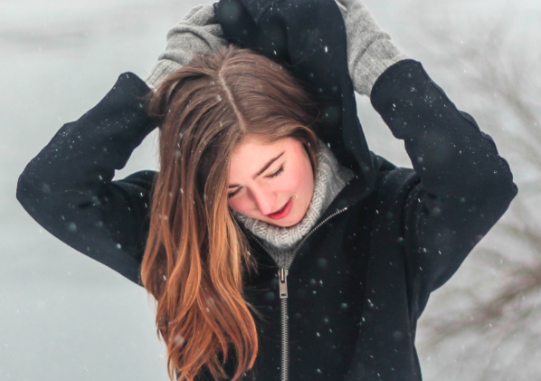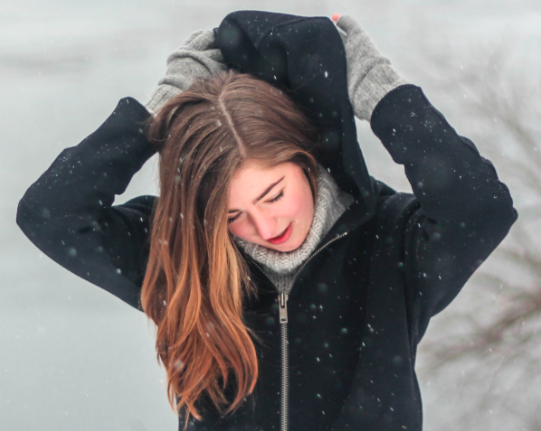
Choosing the right winter jacket is worthwhile for several reasons. Unlike other items of clothing, winter jackets are usually chosen with the intention of wearing them for several years. At the same time, a winter jacket or coat is the most expensive product in our closet.

Hence, we simply will not replace the wrong choice the next day, as we would when buying a T-shirt. In this article, we are going to dig deep into the factors that need to be considered in this situation. Let’s go over how you choose the right winter jacket.
Water resistant
Especially if you want to do outdoor activities in winter, waterproofness is the most important thing for your comfort. The seal is also closely related to the water column.
Water column
The water column indicates how high the “water column” is that the jacket materials can withstand before they soak. The size is most often given in millimeters. Note, however, that even high-water columns do not necessarily mean that you will not get wet – this is also strongly related to the quality of seams, ventilation systems or closures.
The ideal values of the water column for outer jackets are approx. 5000 mm. This is completely sufficient for the classic Central European winter. Values around 10,000 mm and higher are particularly helpful in alpine environments under more extreme conditions.
Breathability
It may seem paradoxical. In winter we don’t want the heat to escape. But the mens leather jacket has to breathe and thus withstand sweating, which can throw all the positive properties of the jacket overboard, because if you are sweaty, it is easy to catch a cold even in the warmest jacket.
Wind resistance
Breathable and windproof at the same time. As complicated as it sounds, the outer layer of the winter jacket should protect you from the outside wind. You will appreciate it the most, for example on the slopes where you are out on skis or snowboards.
What purposes hall the jackets fulfill?
First of all, you need to think about the purpose your new partner should serve during the cold days. First, imagine what your classic winter looks like. How much time do you spend in the mountains, in the city or maybe on walks with your dog? From there, choose your most common outdoor activity in winter and keep making your choices. If you’re not 100% sure, we’ve picked some of the most common uses of winter jackets to help you choose.
TYPES OF WINTER JACKETS
- Winter jacket to town
Winter in the city is often not as harsh and unpredictable as on snow-capped mountain peaks. Thinner variants are sufficient here. There is no need to focus extremely on functional elements. As the transitions between a bus stop, parking lot, job or house are usually not the longest. So, we often don’t even spend enough time outside to cool off.
For this reason, in addition to a jacket, we often choose a coat for the city that simply does what it should do. Breathability, thermostats or water column and other factors have lower priority in the city, so we can prefer style.
- Outdoor and hiking winter jackets
The more movement, the more emphasis is placed on the above-mentioned breathability. During more demanding physical activities, a person sweats, so it is more necessary to remove heat from the body. The outer layer should be waterproof when hiking. So, if you choose to be a hobby athlete, choose a thinner piece that is rich in functional layers.
- Winter jackets for skiing / snowboarding
The specific characteristics of the jacket are probably best known on the slope. A waterproof layer with a high-water column will help you handle unpredictable snowfall, and a proven windproof layer will help you cope with frequent gusts of wind in the mountains. Above all, skiing is a frequent change between demanding physical activity and sitting comfortably in the cable car. When choosing a jacket for this activity, the word breathability is key.
From a practical point of view, a higher number of bags pays off when skiing or snowboarding. This is because they replace the annoying backpack on the slope.
WHAT IS THE BEST LAYERING OF CLOTHES WITH THE JACKET?
Here comes the catch. Even if your jacket meets all possible parameters for optimal function and comfort in a given situation, poor layering can affect its function.
So ideally avoid flannel, a cotton T-shirt or a sweatshirt made of the same material under the jacket. Under the jacket, it’s important to choose clothing that absorbs as little moisture as possible, dries quickly, and can effectively transport moisture to the outside – to let the jacket do the rest.
THICK OR THIN?
This mainly depends on where you plan to use your jacket. Thick does not automatically mean warmer, as thin jackets may have more layers, which can lead to more warmth, especially during high-movement activities. For more information, we recommend reading a little earlier in the chapter on types of winter jackets.
Which material should you choose?
Synthetic
Soft shell material, fleece, Gore-Tex, Prim aloft and a number of other insulating, breathable elements are part of the winter jackets that we call “functional”. Therefore, a higher training intensity during the winter months is guaranteed by a jacket with active layers.
Down jackets
While down jackets may not have as many special functions as some synthetic materials, they are undoubtedly still the best insulating material. The feathers are most useful in town, where they make a full return as part of the best street wear outfits.
How do you take care of your leather jacket?
Can I wash my winter jacket? Not so fast. Make sure to check out the sign before you start grooming. Here you will find most of the information about your jacket type. The sign should provide answers to questions about whether the jacket should be washed in the washing machine, whether the jacket belongs in the dryer, or when and how it should be waterproofed.
Washing machines and dryers can damage the functional layers of the jacket, so an expensive jacket can lose its benefits in an instant. On the flip side, you won’t spoil anything if you take them to a professional dry cleaner every now and then, where they’ll handle the jacket properly.
Leave a Reply
You must be logged in to post a comment.